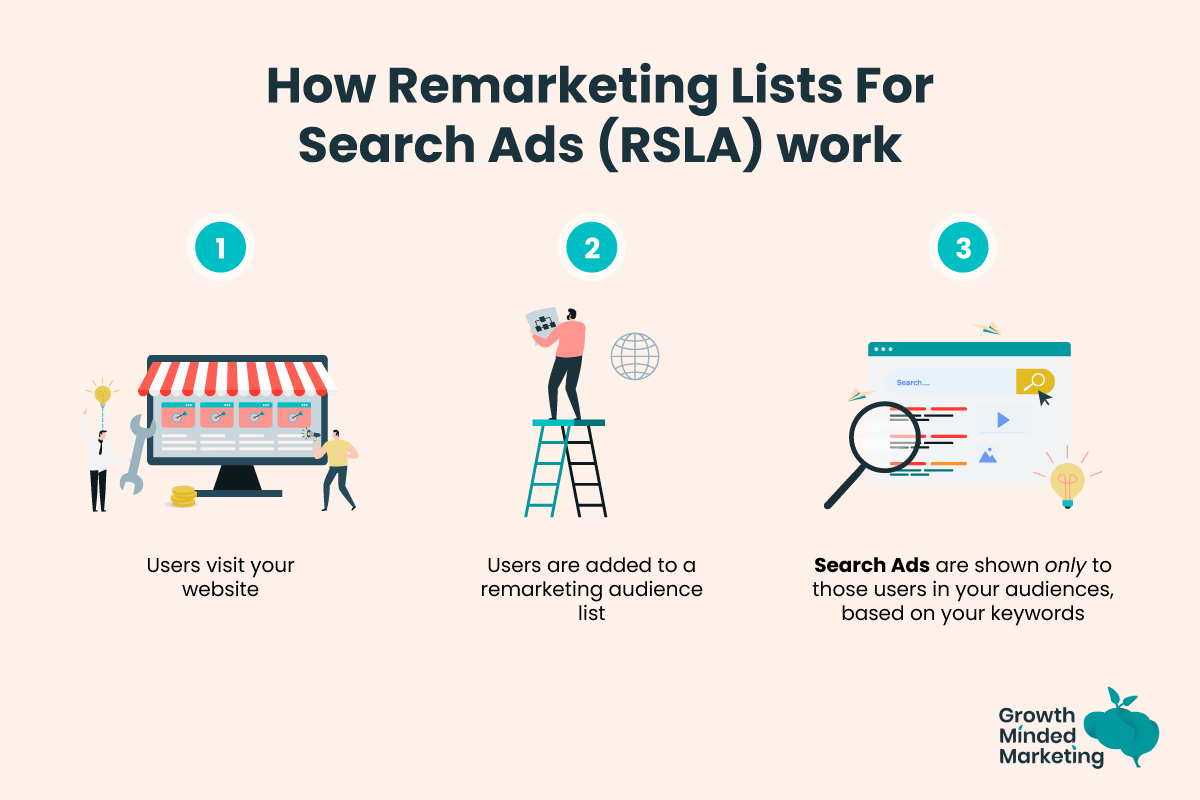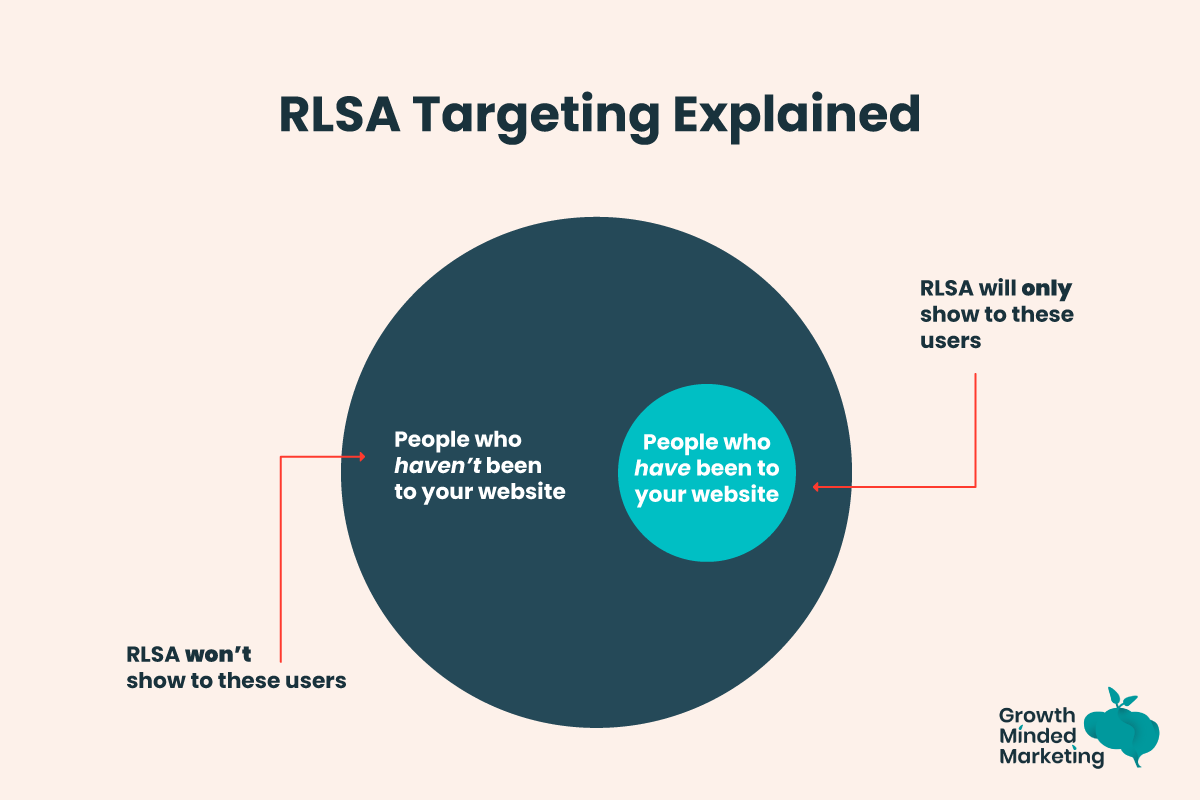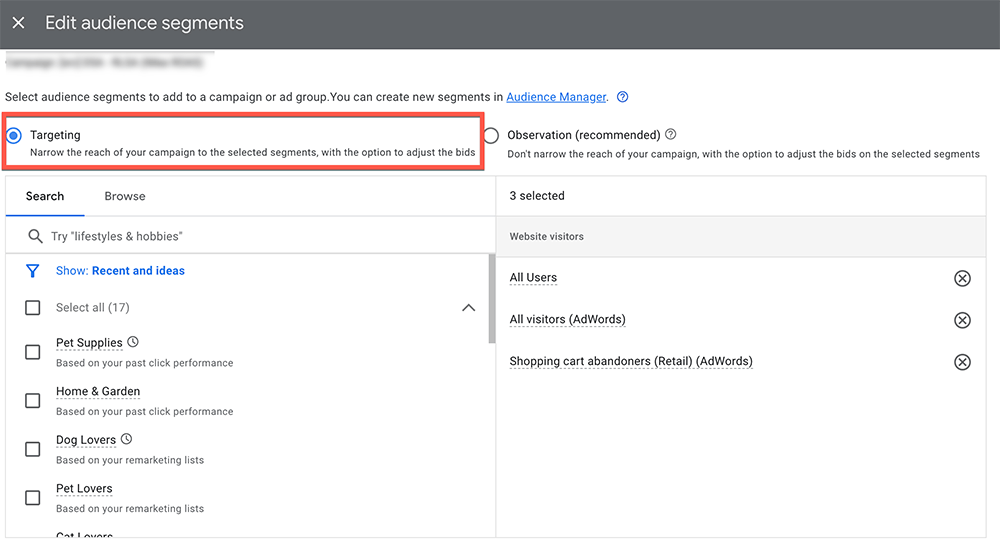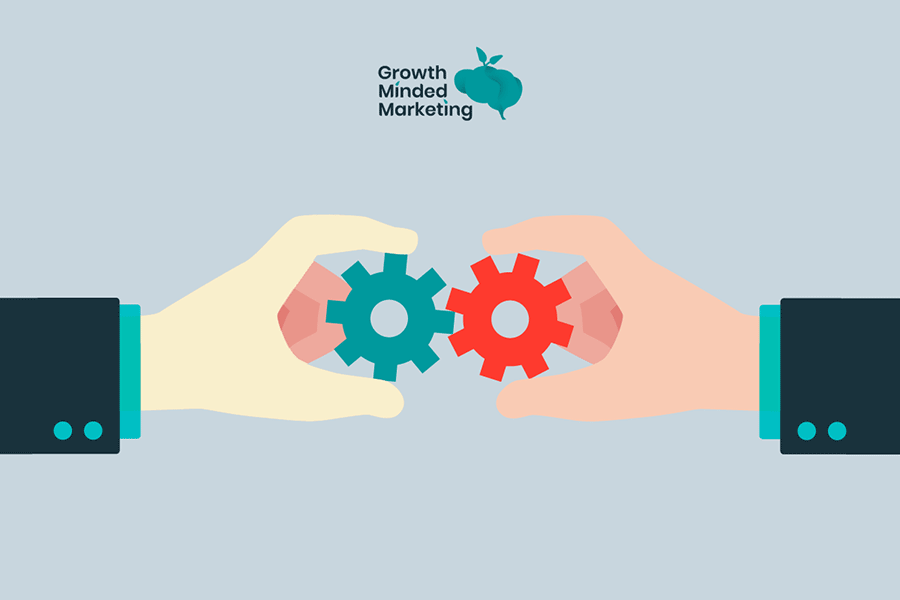Remarketing Lists for Search Ads (RLSA) are a powerful tool for PPC marketers that allows them to target previous website visitors with personalised search ads.
By using RLSA, advertisers can effectively reach customers who have already shown an interest in their products or services, and deliver highly relevant and targeted search ads to them.
Cool right?
There is a lot you can achieve by retargeting people who have interacted with your website in the past, but haven’t taken your desired action yet!
Let’s dig deep and see how you can capitalise on Remarketing Lists for Search Ads!
Table of Contents
ToggleWhat are Remarketing Lists for Search Ads (RLSAs)?
RLSAs allow you to target and reach people via Search ads who have already interacted with your website. You target these people with highly targeted search ads that trigger based on specific keywords.
How Do RLSAs work?
Simply put, RLSAs show ads to visitors who have visited your site in the past.
Here’s how it works:
- Users visit your website
- Users are added to a remarketing audience list
- Search Ads are shown only to those users in your audiences, based on your target keywords and their searches
So to re-clarify, RLSAs will only show Search ads to users who are in your remarketing audience lists.
When Should You Use Remarketing Lists for Search Ads?
The name of the game with RLSAs is to show Search ads to users that have already interacted with your website.
There are lots of creative ways to leverage RLSAs, depending on your needs, and the actions users have taken to be added to your audiences.
A few examples of remarketing audiences to target:
- Blog visitors who left your website without conversion
- Potential leads who visited services page URLs, who are in the decision-making stage
- Past or existing customers
People in each of the above audience examples are in very different stages of brand awareness.
Some simply know you exist, some are actively interested in your products/services, and some are already customers.
…And Each deserves their own levels of attention and segmentation through RLSA.
There are a couple of requirements that you should meet before you can create an RLSA campaign:
- A minimum of 1,000 users in your remarketing audience in the past 30 days
- The membership time limit in the remarketing audience can’t exceed 540 days.
How does RLSA compared to standard search ads?
RLSA offers several key benefits compared to standard search ads. These benefits include:
Increased Ad Relevance
Through RLSA you can target users with highly relevant ad copy based on their specific behaviours on your website.
This results in a more personalised and engaging ad experience for the user, which can lead to higher click-through rates and conversions.
Better ROI
By targeting only those who have already shown an interest in your products or services, you are more likely to reach users who are further along their brand awareness journey, and much more likely to convert.
This can result in a higher ROI compared to non-RLSA Search ads, which are more broadly targeted to all users.
Better Bid Management
RLSA gives you the ability to segment and bid more aggressively on specific audience segments.
Take these 2 example audience we used earlier:
- Audience 1: Blog visitors who left your website without conversion
- Audience 2: Potential leads who visited services page URLs, who are in the decision-making stage.
Audience 2 are way more engaged, and deserve a higher bid than Audience 1.
If you’re targeting ‘money maker’ transactional keywords at this point in your RLSA campaign in your ‘Audience 2’ ad group, I’d be aiming for search ad position dominance with a high bid!
Audience 1 are still at the ‘browsing’ phase. You want to progress them through the conversion funnel, but not as aggressively as those ‘warmer’ Audience 2 users!
The main objective here is to focus your budget, bidding and messaging on the higher-value audiences.
Ultimately you want to be increasing bids for commercial/transactional keywords at the final decision-making stage.
Improved Ad Copy
RLSA enables you to create targeted ad copy that is specific to each audience segment.
You could show ad copy that offers a limited time special promotion or discount to users who have previously abandoned their shopping cart, helping to entice them back to your website to complete their purchase.
RLSA Campaign Best Practices & Example Strategies
Follow these best practices to use RLSA to the fullest:
1. Link RLSA Activity To The Users Funnel Stage
We hinted on this above, but one of the major benefits of RLSAs is the ability to target people based on their lifecycle stage and where they are in the conversion funnel.
Your customers have different needs, and they’ll use different search keywords as they move down the funnel.
According to studies, (and depending on the sales cycle of your business) the average visitor will interact with your website up to 8-11 times before becoming a customer…
RLSA campaign gives you a chance to reduce friction and minimise these interactions by showing compelling ads to previously engaged users.
2. Targeting Competitor Brand Keywords
One of the best techniques is to target the middle of the funnel visitors by bidding on competitor brand terms.
When potential customers are considering different options and are on the fence, this is the time when they compare your brand with the competition.
You can bring them back to your website by bidding on competitor brand keywords.
Take this example:
I’ve been researching different project management tools, and spent some time reading blog posts on the monday.com website.
As part of my research, I looked at some competitor pricing options and searched for ‘Asana price‘.
As I’ve been browsing the monday.com site, I could be in an RLSA audience bucket and they’re trying to bring the brand back to my attention, which has worked! (Either that or they’re just broadly targeting Asana’s keywords)
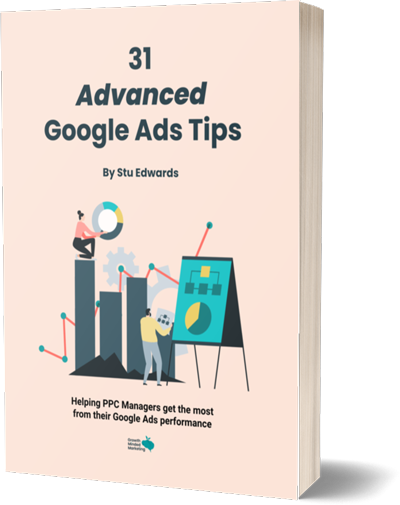
Google Ads tips
Learn advanced tips that PPC professionals use to dramatically increase their Google Ads performance!
3. Leveraging Up-sell / Cross-sell Opportunities
Why not use RLSA to target existing customers with upsells and cross-sells?
Statistics show that it costs five times less to sell to an existing customer than to acquire a new customer – and the likelihood of selling to an existing customer is up to 70% as compared to only 20% to a new customer.
So how would you do this?
You could target broad keywords related to your services or products to past converters – with the goal of bringing them back to your site.
You could show specific ad copy tailored to these users with special discount codes or other reasons why they should come back and shop with you!
4. Make Audience Based Bid Adjustments
One of the best things about RLSA campaigns is the ability to tailor bids to certain audiences.
You can increase/decrease bids for keywords based on the value of the interaction with your website.
Eg: A potential customer who abandoned cart is more valuable to you compared to a visitor who reads a blog post.
Segment these audiences into different ad groups, and treat the bids / tCPA / tROAS accordingly.
5. Expand Your Targeting With RLSA + DSA
Dynamic Search Ads are fantastic at broadening your reach beyond your target keywords.
Running a DSA campaign with your RLSA audiences will only show those DSA ads to visitors that are already familiar with your website.
This approach is very effective, and the search term data you’ll see makes it worth the effort!
Further Reading
How Are RLSAs Different from Other Remarketing Campaign Types?
The key difference between RLSA and other remarketing campaigns is that RLSA works specifically for Search campaigns, shown in the Google Search Results Page (SERP) – not via Display ads on the GDN, or the YouTube platform etc.
How Do You Set Up Remarketing Lists for Search Ads?
Setting up RLSA ad groups isn’t difficult. It comes down to the Targeting or Observation audience settings in your ad groups.
It goes without saying that you need to have remarketing tracking code in place on your website (either from the Google Ads tag or imported from Google Analytics).
In the ad groups settings, navigate to:
Audiences > Edit audience segments
Ensure you’ve selected the ‘Targeting’ option, and select audiences from the ‘How they’ve interacted with your business‘ section.
In this example above, our RLSA ad group will only target the ‘All users’ and ‘Shopping cart abandoners’ audiences.
Word of warning: If you select ‘Observation’ as your targeting option, ads will be served to users other than your intended audiences, which you don’t want.
Read the Google Ads Audience Strategy: Targeting vs. Observation
guide for more depth on that topic!

Google Ads tips
Learn advanced tips that PPC professionals use to dramatically increase their Google Ads performance!
Final Thoughts on RLSAs
We love RLSAs and leverage them for the majority of our clients – and for our own Google Ads efforts.
With the right strategy in place, RLSAs can drive massive success when reconnecting with key audiences who have visited your website in the past, and rightfully belong in any Google Ads manager’s tool box!
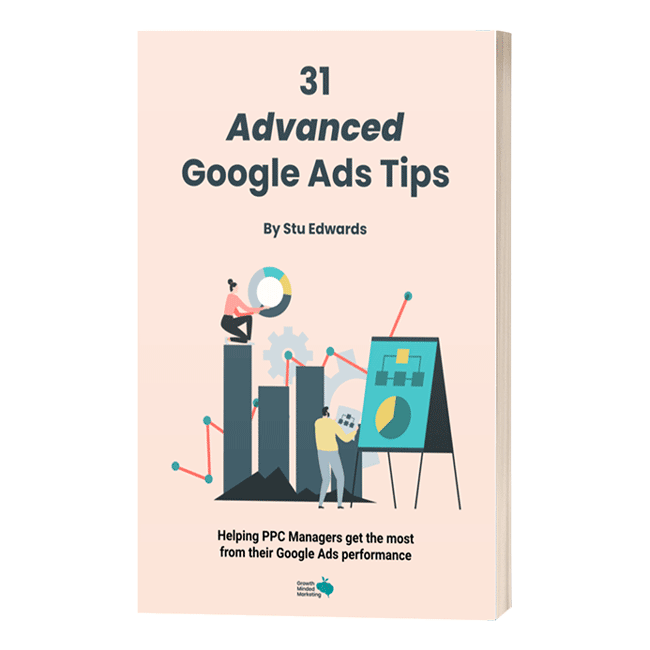
Google Ads tips
Learn advanced tips that PPC professionals use to dramatically increase their Google Ads performance!


